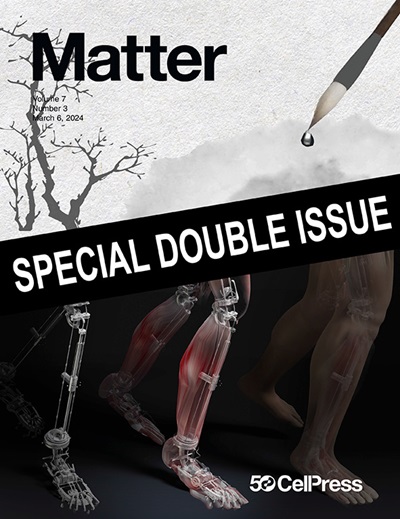转化和刺激响应液态金属集成,可持续的,仿生dna为基础的数据存储
IF 17.5
1区 材料科学
Q1 MATERIALS SCIENCE, MULTIDISCIPLINARY
引用次数: 0
摘要
DNA数据存储因其高存储密度和耐用性而成为解决数据爆炸挑战的一种有前途的解决方案。然而,传统的存储架构需要更换基板,并在多步骤操作中使用对环境不友好的化学品,从而阻碍了无缝和可持续的存储。在这里,我们报告了液态金属(LM)-DNA,一种集成和可持续的DNA存储架构,利用响应性液态金属作为功能适应性存储介质。LM-DNA允许在单一介质内级联存储操作,包括酶促DNA合成,通过热激活的密封封装,以及由电毛细管效应驱动的电动解封装。绿色酶促DNA数据写入和物理数据封装/解封装避免了有毒化学物质,确保了更可持续的DNA存储途径。此外,液态金属的流动性使仿生操作(如文件分割、合并和重塑)成为可能,为信息管理提供了前所未有的灵活性。LM-DNA为推进可持续和仿生信息存储技术提供了有希望的基础。本文章由计算机程序翻译,如有差异,请以英文原文为准。


Transformable and stimuli-responsive liquid metal for integrated, sustainable, and biomimetic DNA-based data storage
DNA data storage has emerged as a promising solution to address the challenges of data explosion due to its high storage density and durability. However, traditional storage architectures require substrate replacement and the use of environmentally unfriendly chemicals for multistep operations, hindering seamless and sustainable storage. Here, we report liquid metal (LM)-DNA, an integrated and sustainable DNA storage architecture that leverages a responsive liquid metal as a functionality-adaptive storage medium. LM-DNA allows cascaded storage operations within a single medium, including enzymatic DNA synthesis, hermetic encapsulation through thermal activation, and electrokinetic decapsulation driven by the electrocapillary effect. The green enzymatic DNA data writing and physical data encapsulation/decapsulation avoid toxic chemicals, ensuring a more sustainable route for DNA storage. Furthermore, the fluidity of liquid metal enables biomimetic operations such as file splitting, merging, and reshaping, offering unprecedented flexibility in information management. LM-DNA provides a promising foundation for advancing sustainable and biomimetic information storage technologies.
求助全文
通过发布文献求助,成功后即可免费获取论文全文。
去求助
来源期刊

Matter
MATERIALS SCIENCE, MULTIDISCIPLINARY-
CiteScore
26.30
自引率
2.60%
发文量
367
期刊介绍:
Matter, a monthly journal affiliated with Cell, spans the broad field of materials science from nano to macro levels,covering fundamentals to applications. Embracing groundbreaking technologies,it includes full-length research articles,reviews, perspectives,previews, opinions, personnel stories, and general editorial content.
Matter aims to be the primary resource for researchers in academia and industry, inspiring the next generation of materials scientists.
 求助内容:
求助内容: 应助结果提醒方式:
应助结果提醒方式:


